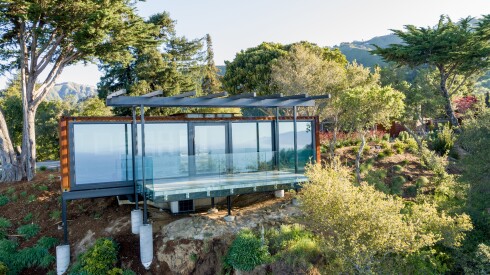If you are anything like me, you probably associated the Renaissance Hotels brand with that oversized “R” and forgettable business trips of yore. But the hotel chain has been sneakily getting way cooler on us, having reimagined its properties to each reflect a more distinct, local voice.
And now it’s taken the concept a step further with a new offering meant to bring guests even closer to the destination—the Renaissance Navigator, a local host who will handpick unexpected experiences for guests based on their tastes and interests.
To do that, Renaissance hotels have teamed up with local venues to serve as what the brand calls This Way partners (the larger marketing campaign around this is called “Discover This Way”). Upon check-in, guests will be given a Navigator map identifying the partner locations, and when they go to those locations they can present a token (provided by the hotel) that will give them inside access to some kind of exclusive perk—like an after-hours entry to a gallery or an off-menu hand-crafted cocktail at a local bar.

The Renaissance Harlem Hotel opening in 2020 will give a wink and a nod to the 1920s and 1930s Harlem Renaissance era.
Courtesy of Renaissance Hotels
Additional examples include access to a secret art gallery in a neighborhood café in Paris; an archeologist-led street art and night market tour in Bangkok; and live art, dance, and musical experiences at a bookstore and indie movie theatre in São Paulo.
“We really believe that at its core, the brand is for guests who are wanting to feel like they’ve been somewhere, who wanted to walk away with stories that are worth retelling,” said George Fleck, vice president of global brand marketing and management for Renaissance Hotels. “Especially when you’re on a business trip and you don’t have a lot of time, [this is] that one opportunity that you have to get out of the hotel, that you’re able to take away something of the destination, and specifically of the neighborhood you’re in.”
The Navigator program and Renaissance properties in general emphasize evening activities and programming, ways in which guests (who, yes, are typically traveling for business—Renaissance remains at its core a brand associated with business travel) can enhance their trip after-hours. There is often a live entertainment or food and beverage component.
The official launch of the new Navigator program kicks off on May 16, when all the Renaissance hotels around the world will celebrate what the company calls the Global Day of Discovery, a Renaissance tradition of showcasing special experiences and events that is in its eighth year.
The Renaissance design revolution
The Renaissance chain was born in the early 1980s and grew into a brand that was known for its convenient locations in city centers and near airports, but definitely not for stellar interior design. It was acquired by Marriott in 1997 and in more recent years has been quietly getting a refresh that would leave anyone still associating it with the lifeless Renaissance hotels they once knew astonished.

The reimagined bar at the Renaissance Philadelphia Downtown Hotel.
Courtesy of Renaissance Hotels
Fleck acknowledged that while Renaissance is still predominantly a brand for corporate travelers and for larger meetings and convention groups, there is no reason why the properties shouldn’t feel any less inspired than more boutique-style hotels.
“At Renaissance we are now really doubling down on the design of the properties,” said Fleck. He added that there should be design elements, such as locally-inspired artwork and decor, interesting enough that they would be worth sharing on social media or with friends and family.
The look and feel of the new and renovated hotels are meant to feel distinct and to reflect not just the city that they are in but also, more specifically, the neighborhood. And they are meant to be more fun, said Fleck.
“We wanted to make sure we capture the vibrancy of the destinations we’re in,” he said, noting that the Renaissance vibe may have felt a bit too serious in the past. The hope is that now the hotels have more energy and are more uplifting.
So, which Renaissance hotels will feature the new look? For one, all of the brand’s completely new properties will, which includes 16 hotels that opened globally in the past year in destinations such as Philadelphia, Pennsylvania; Warsaw, Poland; Taipei, Taiwan; Bali, Indonesia; Hangzhou, China; and Cancun, Mexico. The brand is set to open a total of nine more hotels by the end of 2019.
Additionally, existing hotels have been getting fresh, chicer interiors, too. There are 17 hotels expected to have completed renovations by the end of this year, including in Paris; Barcelona, Spain; Hamburg, Germany; and the New York Times Square property. According to the company, the brand is close to completing renovations at nearly half of its North America portfolio.
Travelers staying at the collection of more than 160 Renaissance hotels in 35 countries should also benefit from the fact that Renaissance is part of the larger Marriott family.
The new Renaissance hotels “offer the consistency, the quality, the service that you would expect from a chain brand, but [also] something extra special that you would expect from a boutique hotel,” said Fleck. The Renaissance brand is also part of the recently expanded Marriott Bonvoy loyalty program.








